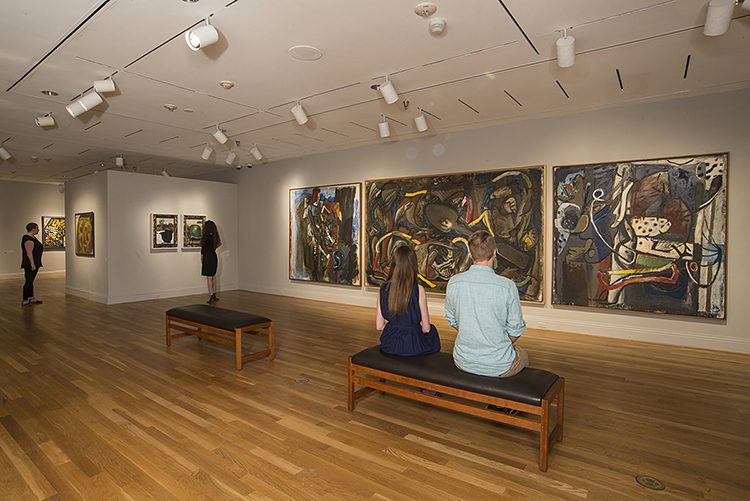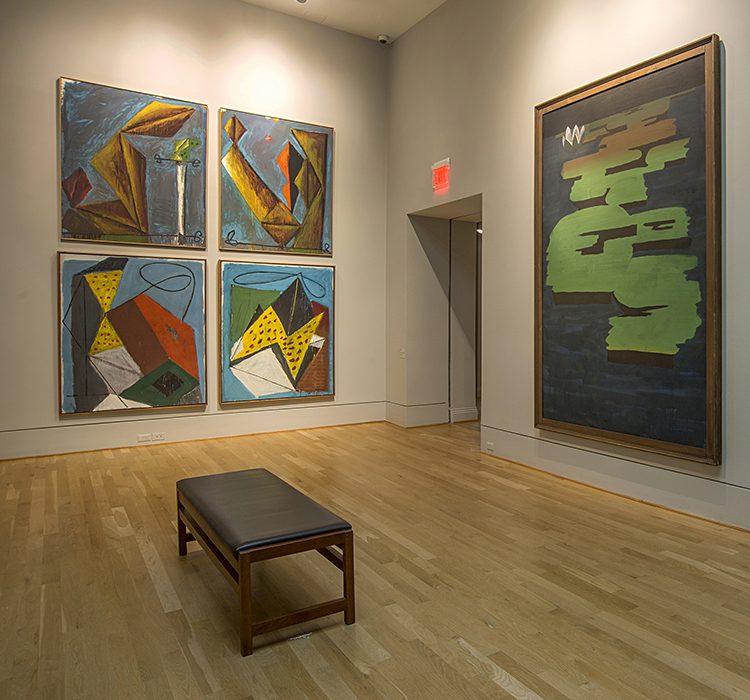
Installation view of the Markus Lüpertz exhibition at The Phillips Collection. Photo: Lee Stalsworth
When Markus Lüpertz began his career, there were many trends and movements dominating the arts in West Germany. On the one hand, there was the persistence of large-scale German abstraction. Unlike Jackson Pollock or Willem de Kooning in the US, many German abstract painters created very sleek, crisp compositions that were often devoid of the more expressive and emotional language of the Abstract Expressionists. The Zero movement, founded by Heinz Mack and Otto Piene, was even more overt in its opposition to emotion and expression. More aligned with Minimalism and Arte Povera, the Zero artists largely abandoned traditional painting in favor of non-traditional, industrially produced materials, creating art that explored light and movement. The typological photography of Bernd and Hilla Becher, who began working in the sixties, came to influence a generation of art photographers who adopted the Bechers’ cool, rational style. International movements like Pop Art and Fluxus became increasingly popular in Germany at this time as well, challenging the relevance of traditional painting. Lüpertz, along with a handful of other artists with whom he is often associated) like Georg Baselitz and Eugen Schönebeck), was therefore unique in his contrarian commitment to expressive, ambitious, and challenging painting. As one German critic in the eighties put it, “the qualities [Lüpertz] praised were no longer rationalism, clear lines, smooth surfaces, but passion, expressivity, physicality and visionary forms and content, which leads to myth.” (Elke von Radziewsky).
Max Rosenberg, 2016-17 UMD-Phillips Collection Postdoctoral Fellow in Modern and Contemporary Art

